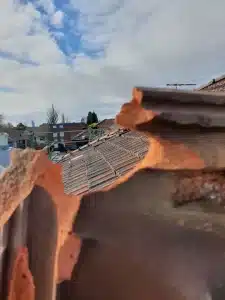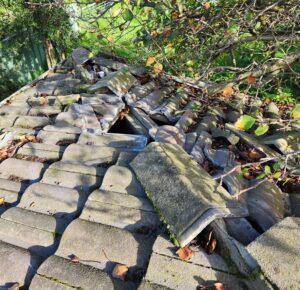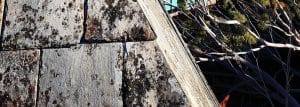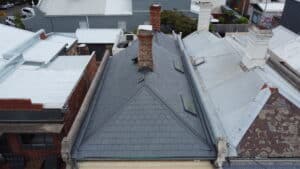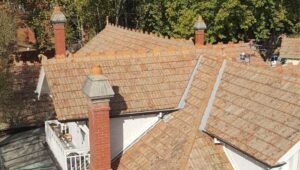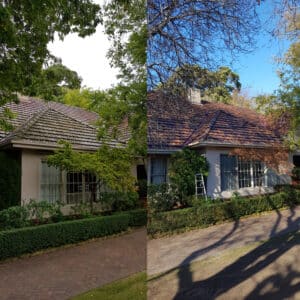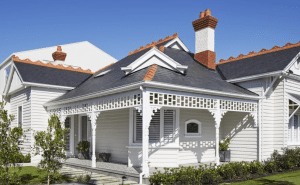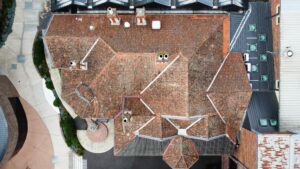It’s not just moss on your roof, lichen is up there too and maybe a few balls amongst other things!
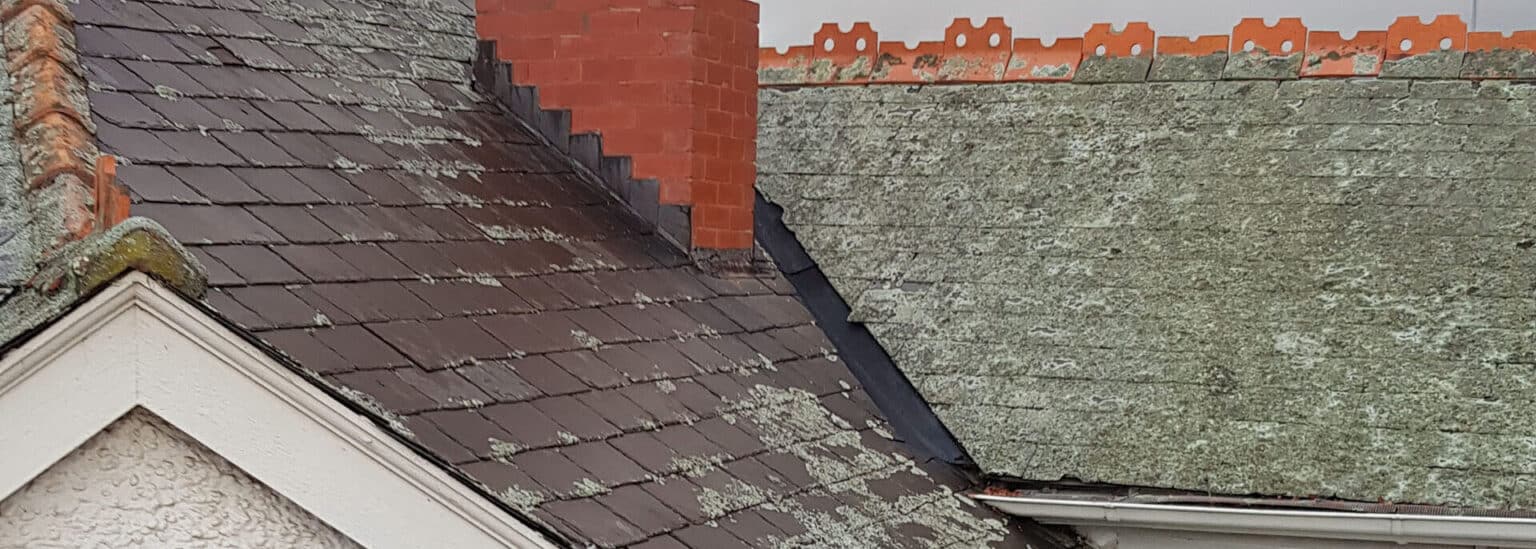
Introduction
Some people like the look of moss on their roof and some just want it gone! Moss and lichen will grow just about anywhere as long as there’s water particles around and dust to germinate. In settings where it’s always damp with very little light exposure, moss and lichen will thrive (light can be diffused by surrounding trees or neighbouring properties). The likes of dirt, debris or even grass cuttings can be blown onto your roof creating the foundation over time to start the growth process.
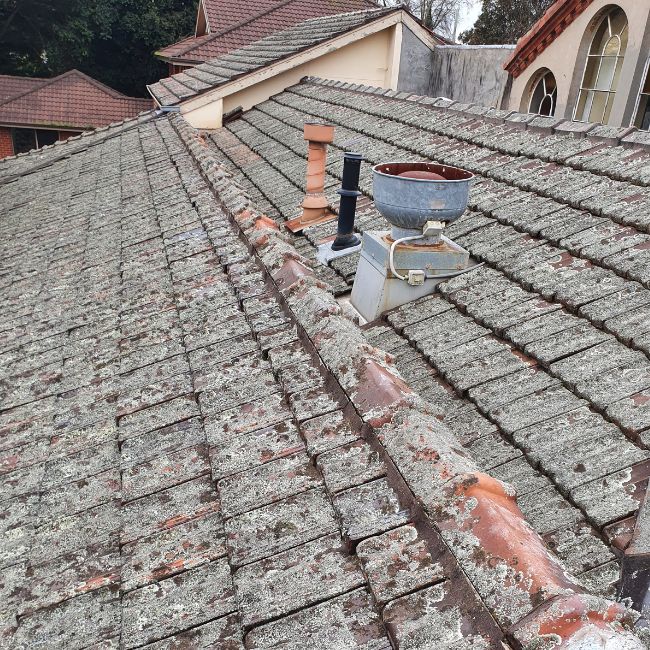
Depending on the amount of moss and lichen on your roof, it may not be a problem at all if you like the look of it. Some materials that are porous can be affected by the moss (mainly old concrete and low quality terracotta, as it grows deep roots making it hard to remove them completely (even with chemical and high pressure clean afterwards).
Once the heavyset moss and lichen begins to appear, then you will likely have a problem with water ingress sooner or later. Dirt and debris will build up around these areas, with the moss acting like a catchment area causing watercourses, sheet overlaps and any joins to fill up and stop effective waterflow on your roof. This is the main reason why leaks from heavyset moss and lichen growth can cause leaks if unattended.
Who wants to be woken in bed, by drops of water coming from the ceiling at 3am? Unless you’re on night shift and fall asleep on the job, then it’s unlikely anyone would.
There are many ways to go about removing moss and lichen from your roof, it all depends on your roof, the setting, and your personal preference.
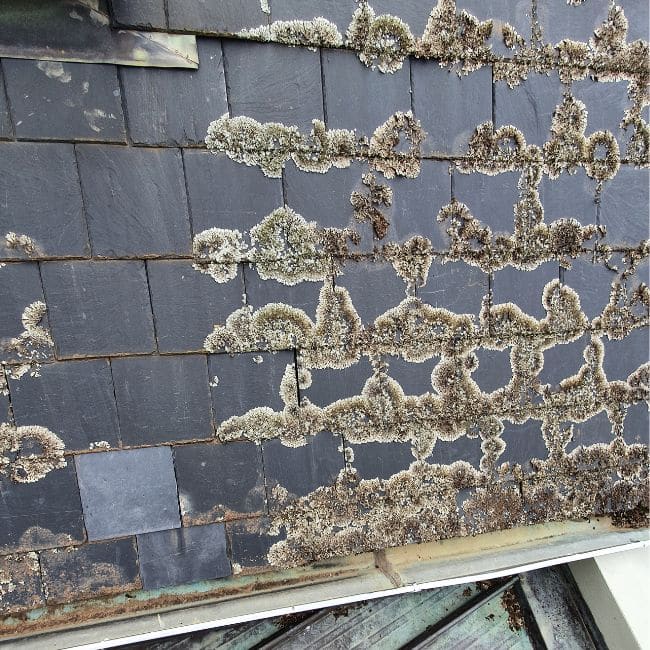
Things to ponder on so you have all the necessary answers to find the right solution:
- What’s on my roof?
- Is it Terracotta? If so, is it shiny or matt in appearance?
- Is it Slate? If so, how old is it and is it showing signs of rusting?
- Is it Concrete? If so, how old is it and has it been painted before?
- Is it Metal? If so, how old is it and is it rusting or loosing colour?
- Do I have water tanks attached to the gutters?
- How’s my water pressure?
- How close are my neighbours?
- Is the roof watertight?
- Do I have washing on the line?
- Is my classic car parked outside?
Have a ponder and get your answers ready!
Be mindful, for those unaware. Nature always wins in the end!
The moss will return and there is no special coating in the world that can stop it (for now)!
Terracotta is quite durable and will stand the test of time against most natural stone products. It can take strong chemicals used to kill moss and lichen down to the roots and a good high-pressure wash afterwards (followed by a rinse of coarse).
Slate is also durable and even more so then the Terracotta for the most part (unless low grade slate). However, this does not take well to strong chemicals. A biodegradable spray is best used to kill the moss on slate, as it does not tarnish the slates appearance leaving no blemishes. After a good soaking with spray, a soft wash with pressure washer should be undertaken to remove moss and lichen.
Concrete hardens with age, so it too can be durable if it’s is from a compressed mould (most tiles post 80’s). Depending on the level of moss and the integrity of the tiles, a good high pressure wash will suffice usually (a good wash).
Metal can be temperamental when using strong chemicals, as they can make metal rust out quickly and tarnish the paint. Biodegradable spray with a pressure wash is recommended here.
An old method for those with patience, is to spray the roof with chemical or Bio spray and leave it. This way will take 6-12 months for results and gutters will fill up with debris is not attended too.
Something to think about before you decide to clean your roof!


